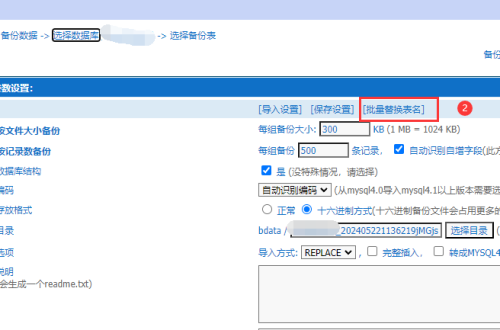帝国CMS内容页调用TAG的5种方法!包括PHP和灵动还有样式改造!
方法1、
调用10条当前tag
[showtags]’selfinfo’,10,0,”,0,”,’ ‘,0,”,’tagname'[/showtags]
方法2、
内容页调用tag,按tagname调用
或,按tagname调用
<?php
$fr=$empire->fetch1(“select infotags from {$dbtbpre}ecms_news_data_{$navinfor[stb]} where id=’$navinfor[id]'”);
$infotags=$fr[‘infotags’];//这个就是infotags字段内容
$tag=”;
$t=explode(‘,’,$infotags);//去逗号
$d=count($t);
for($i=0;$i<count($t);$i++)
{
if($t[$i])
{
$tagslink=”[!–news.url–]e/tags/?tagname=”.urlencode($t[$i]).”&tempid=1″;
$tag.=””.$t[$i].” “;
}
}
echo $tag;
?>
或,按id调用
<?
$tbname=$class_r[$navinfor[‘classid’]][‘tbname’];
$ftbname=$dbtbpre.”ecms_”.$tbname.”_data_”.$navinfor[‘stb’];
$hlt = $empire->fetch1(“select infotags from {$ftbname} where id=’$navinfor[id]'”);
$a=$hlt[infotags];
$str=str_replace(‘,’, ‘,’, $a);
$tag=”;
$t= explode(“,”, $str);
for($i=0;$i<count($t);$i++)
{
if($t[$i])
{ $datar=$empire->fetch1(“select tagid from {$dbtbpre}enewstags where tagname=’$t[$i]’ limit 1″);
$tagslink=”[!–news.url–]e/tags/?tagid=”.$datar[tagid].””;
$tag.=””.$t[$i].” “;
}
}
echo $tag;
?>
注释:
限制数量,把$i<count($t)修改为$i<count($t)&&$i<限制数量
mid=1数据模型id tempid=1模型的模板id orderby排列方式 classid=34栏目id &line=5调用条数
如:上面的 &tempid=1
—————————————————————————————————————
方法3、tags标签实现多颜色样式
<?php
$ecms_bq_sql=sys_ReturnEcmsLoopBq(“select * from [!db.pre!]enewstagsdata where classid=’$navinfor[classid]’ and id=’$navinfor[id]’ order by tagid”,10,24,0);
$bqno=0;
while($bqr=$empire->fetch($ecms_bq_sql))
{
$bqsr=sys_ReturnEcmsLoopStext($bqr);
$bqno++;
?>
<?php
$ecms_bq_sql2=sys_ReturnEcmsLoopBq(“select * from [!db.pre!]enewstags where tagid=’$bqr[tagid]’ order by tagid”,1,24,0);
$bqno2=0;
while($bqr2=$empire->fetch($ecms_bq_sql2))
{
$bqsr2=sys_ReturnEcmsLoopStext($bqr2);
$bqno2++;
?>
” href=”e/tags/?tagname=&tempid=1″>
<?php
}
}
?>
接着在css中定义标签的样式,这个可以自己定义。
.tag-1{background:#ff7094;}
.tag-2{background:#94b770;}
.tag-3{background:#db94ff;}
.tag-4{background:#399;}
.tag-5{background:#f60;}
注释:mid=1数据模型id tempid=1模型的模板id orderby排列方式 classid=34栏目id
如:上面的 &tempid=1
—————————————————————————————————————
方法4、
[e:loop={“select a.*,b.* from [!db.pre!]enewstags a LEFT JOIN [!db.pre!]enewstagsdata b ON a.tagid=b.tagid where b.classid=’$navinfor[classid]’ and b.id=’$navinfor[id]’ group by b.tagid order by a.num desc limit 100”,0,24,0}]
e/tags/?tagname=’ title=’个’>()
[/e:loop]
—————————————————————————————————————
方法5、
<?php
$tsql=$empire->query(“select * from {$dbtbpre}enewstagsdata where id=’$navinfor[id]’order by id asc limit 7”);
while($tr=$empire->fetch($tsql)){
$tag=$empire->fetch1(“select * from {$dbtbpre}enewstags where tagid=’$tr[tagid]’ limit 1″);
?>
e/tags/?tagname=”>
方法6.(网友提供,感谢)
<?php
$tbname=”news”; //“news”为新闻数据表名称
$ftbname=$dbtbpre.”ecms_”.$tbname.”_data_”.$navinfor[‘stb’];
$hlt = $empire->fetch1(“select infotags from {$ftbname} where id=’$navinfor[id]'”);
$keyr=explode(‘,’,$hlt[infotags]);
for($i=0;$i<count($keyr);$i++)
{
echo ”.$keyr[$i].’ ‘;
}
?>
或
<?php
$fr=$empire->fetch1(“select infotags from {$dbtbpre}ecms_news_data_{$navinfor[stb]} where id=’$navinfor[id]'”);
$keyr=explode(‘,’,$fr[infotags]);
for($i=0;$i<count($keyr);$i++)
{
echo ”.$keyr[$i].’ ‘;
}
?>
或
<?php
$fr=$empire->fetch1(“select infotags from {$dbtbpre}ecms_news_data_{$navinfor[stb]} where id=’$navinfor[id]'”);
$infotags=$fr[‘infotags’];
$r_tag=explode(“,”,$infotags);
for($i=0;$i<count($r_tag);$i++){
if($r_tag[$i]){
$tagslink=$public_r[newsurl].”e/tags/?tagname=”.urlencode($r_tag[$i]);
$tags.=””.$r_tag[$i].””;
}
}
?>
tag:
注释:限制数量,把$i<count($keyr)修改为$i<count($keyr)&&$i<限制数量






